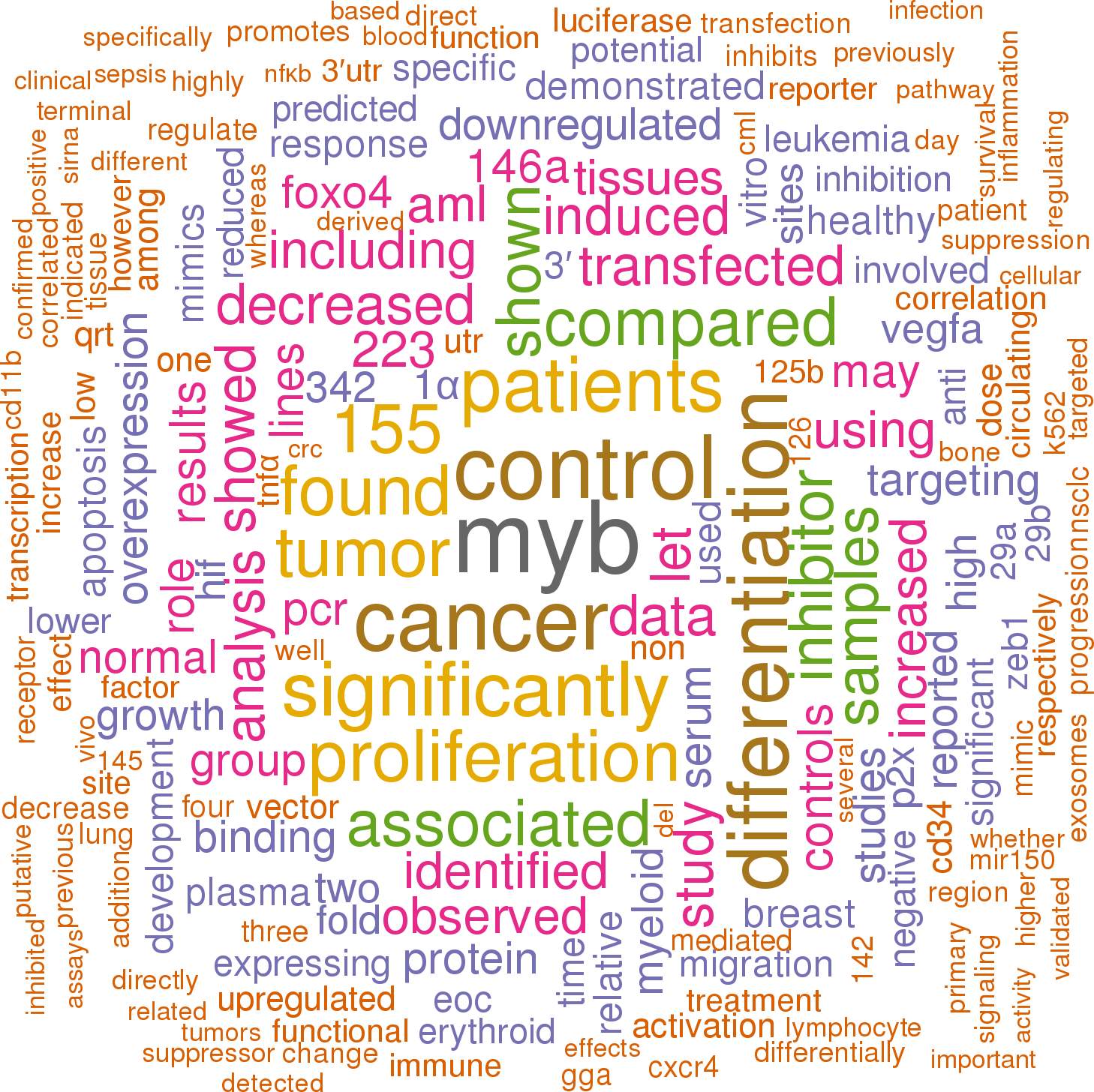Accession
MI0000479
Symbol
HGNC:
MIR150
Description
Homo sapiens
hsa-mir-150 precursor miRNA mir-150
Gene
family?
family?
RF00767;
mir-150
Summary
Caution, this is an AI generated summary based on literature. This may have errors. ?
MIR150 is a microRNA implicated in various cellular processes and disease mechanisms. Studies have shown that MYC can regulate MIR150 expression through direct transcriptional activation and post-transcriptional mechanisms, although evidence from chronic myeloid leukemia (CML) cells did not support the repression of miR-150 maturation following BCR-ABL1 inhibition [PMC6269310]. Additionally, the expression of MIR150 is dynamically regulated in T lymphocytes, with a significant reduction observed 24 hours after stimulation, indicating a potential role in the direct control of its expression [PMC8865640]. In the context of hematopoietic cell transplantation (HCT), MIR150 has been identified among various miRNAs in plasma/serum with potential prognostic significance for graft-versus-host disease (GVHD) [PMC9720327]. Furthermore, MIR150 is among the non-coding RNAs from liver tumors that contribute to macrophage polarization, highlighting its role in cell signaling and immune response modulation [PMC9648394].
Literature search

317 open access papers mention hsa-mir-150
(2132 sentences)
(2132 sentences)
Sequence
58932
reads,
699
reads per million, 102 experiments
cuccccauggcccugUCUCCCAACCCUUGUACCAGUGcugggcucagaccCUGGUACAGGCCUGGGGGACAGggaccuggggac
.((((((.((((((((((((((..(((.(((((((.((((....))).).))))))))))..)))))))))))).)))))))).
.((((((.((((((((((((((..(((.(((((((.((((....))).).))))))))))..)))))))))))).)))))))).
Structure
c u - AC U U - g ucccca gg cccugUCUCCCA CCU GUACCAG G cug g |||||| || |||||||||||| ||| ||||||| | ||| aggggu cc ggGACAGGGGGU GGA CAUGGUC c gac c c - a CC - c a u
Annotation confidence
High
Do you think this miRNA is real?
Comments
This miRNA sequence is predicted based on homology to a verified miRNA from mouse [1], later verified in human [2].
Genome context
chr19: 49500785-49500868 [-]
Disease association
hsa-mir-150 is associated with one or more human diseases in the Human microRNA Disease Database
| Disease | Description | Category | PubMed ID |
|---|
Biological pathways
hsa-mir-150 is involved in one or more biological pathways:
(Source: Reactome)
(Source: Reactome)
Biological reactions
hsa-mir-150 is involved in one or more regulation/signalling events:
(Source: Reactome)
(Source: Reactome)
Mature hsa-miR-150-5p
| Accession | MIMAT0000451 |
| Description | Homo sapiens hsa-miR-150-5p mature miRNA |
| Sequence | 16 - UCUCCCAACCCUUGUACCAGUG - 37 |
| Evidence |
experimental
cloned [2] |
| Database links |



|
| Predicted targets |



|
Mature hsa-miR-150-3p
| Accession | MIMAT0004610 |
| Description | Homo sapiens hsa-miR-150-3p mature miRNA |
| Sequence | 51 - CUGGUACAGGCCUGGGGGACAG - 72 |
| Evidence |
experimental
cloned [2] |
| Database links |



|
| Predicted targets |



|
References
|




